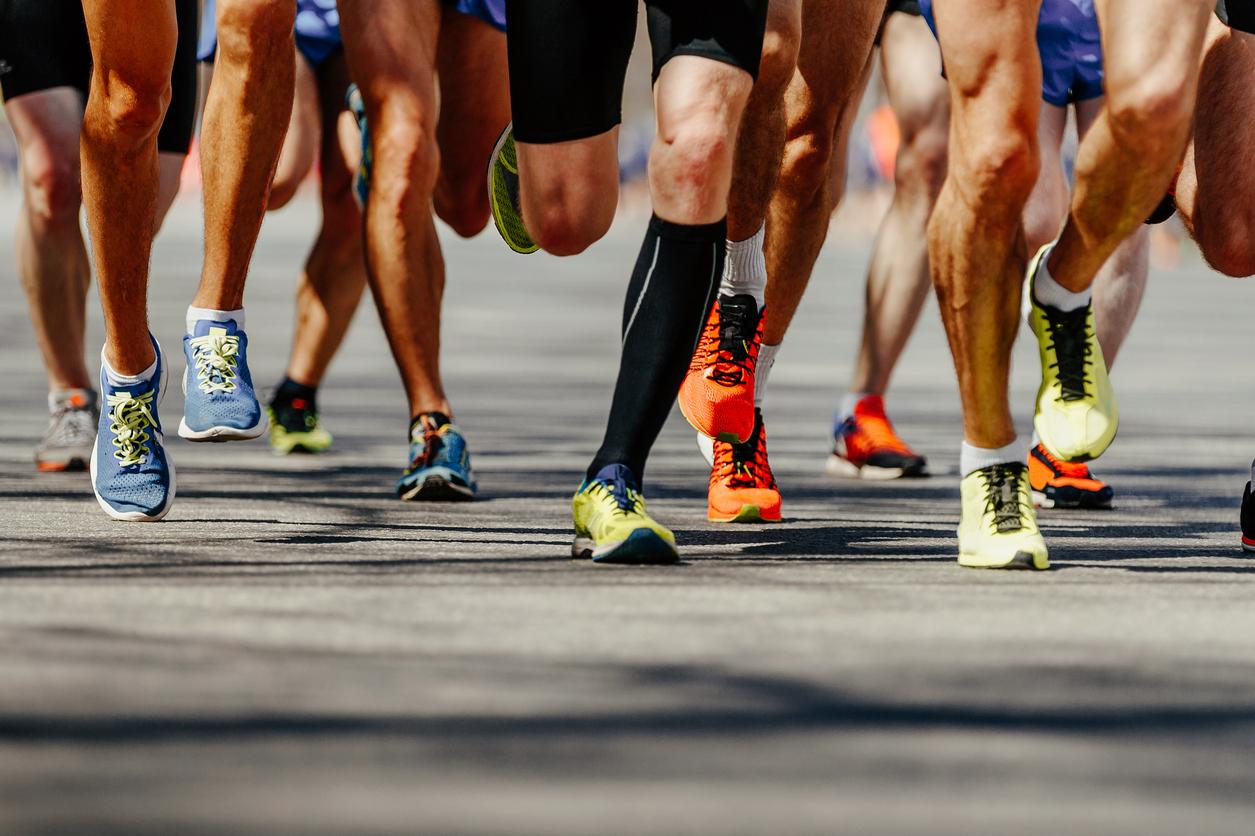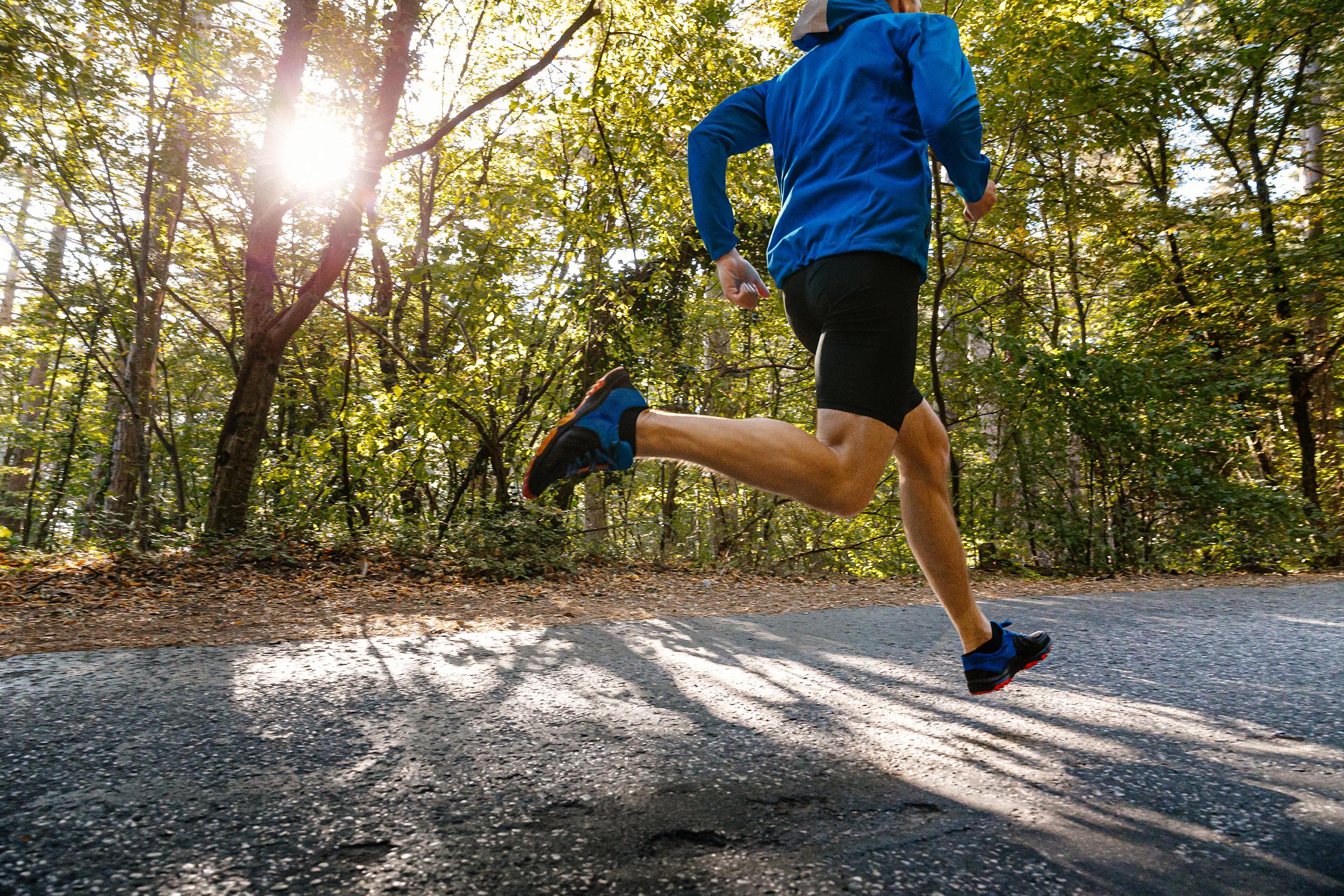Run for your life
What did you say? Dead runners? No, runners stay healthy longer.
For twenty years, researchers at the Stanford University School of Medicine followed a thousand people over the age of 50. Half of them ran regularly, the other half did not. What turned out? 15 percent of the runners had died, compared to 34 percent of the non-runners. Moreover, the first group started to suffer from old age complaints on average sixteen years later. The runners no longer suffered from joint complaints in their old age and had not undergone more hip or knee surgeries.
Running is good if you are over 50. But how do you handle it?
1. Do: sports medical examination
It is wise to have a sports medical examination before you start running. Especially if you smoke, are overweight or have heart problems in the family. During such an examination – which is sometimes (partly) reimbursed by health insurers – a sports doctor examines your blood pressure, fat percentage, heart and lung function and urine. If he sees no medical objections, you can start.
The website www.conditiontesten.nl/sportonderzoek.htm provides an overview of the sports medical advice centers that carry out such an examination. You can also ask your GP to refer you.
2. Buy good shoes
A good pair of running shoes can easily cost a hundred euros. A considerable expense, especially if you do not yet know whether running is really for you. Still, it’s worth the investment. Although it is not proven that special running shoes prevent injuries, they at least protect you from unnecessary muscle pain. Moreover, such shoes are much more comfortable than, for example, tennis shoes. For good advice on which shoe is best for you, visit a dedicated running store, such as Runnersworld or Run2Day. Then immediately purchase a pair of seamless socks: that prevents blisters.
3. Warm up (and cool down)
You’ve probably seen them: the riders who stretch their muscles with one leg on the bridge or leaning against a tree. It looks professional, but it’s not necessary to run smoothly or to avoid injuries. Prepare for the effort by brisk walking for five minutes. After training, do the same to help your body recover.
4. Build it up slowly
The most common mistake novice runners make: doing too much too soon. If you want to prevent injuries and continue walking after a few weeks, start slowly. Twice a week a short training, the intensity of which slowly
builds up is more than enough. That looks like this:
Step 1: running for half a minute and walking for a minute for ten minutes.
Step 2: for ten minutes every other minute
run and walk for a minute.
Step 3: for ten minutes every other minute
running and walking for half a minute.
Step 4: for ten minutes every two minutes
running and walking for half a minute.
Step 5: three minutes of running, one minute of walking,
three minutes of running, one minute of walking, two minutes of running.
Step 6: five minutes of running, one minute of walking,
run for four minutes.
Step 7 and beyond: run for ten minutes without a break.
Then, for example, extend the term by 10 percent every week. Only when you have mastered step 1 – no muscle soreness or stiffness the next day, nor the next time you walk – do you start the next one. Count on having at least six months of training to run for half an hour without a break. Give your body enough time to recover between training sessions: preferably take three days of rest each time and run on Wednesdays and Sundays, for example.
5. The best schedule is no schedule
You can find numerous start-up plans for beginning runners in running books and on the Internet. Prefer not to use it. There is a danger that you are only concerned with achieving the goals of the schedule, and you no longer listen to your body’s signals. Moreover, what is a good program for one person is too slow or too fast for another. If you let your body determine the build-up, you are much more likely to sustain your run in the long run.
6. Can you still talk?
A good rule of thumb for walking pace is that you should still be able to have a conversation with an (imaginary) person next to you while running. Are you out of breath? Then you’re going too fast. It is a warning signal from the body that your muscles are burning more oxygen than can be supplied. You won’t notice it when you walk, but chances are you’ll be stiff the next day. The tendency is then great to skip the next training session or even to drop out completely. Incidentally, it makes no difference to your condition; slow running provides just as much health gain as fast running.
7. Heart rate monitor and sports watch
Many stores and websites recommend that novice runners use a heart rate monitor. The same applies here: what is a high heart rate for one person while walking is normal for another. Your breathing is a much better indicator of whether you are asking too much of your body or not (see tip 6). A sports watch can be useful. You can set a time interval on it so that you hear a beep every time you need to switch from walking to running pace, or vice versa.
8. Whether or not to walk with others
Many novice runners decide to run in groups, whether or not under the guidance of an instructor. That is more fun and provides a big stick if you don’t feel like it. Nevertheless, it is wise to train alone for a few months, so that you build up a basic condition at your own pace. If you start directly in a group, there is a good chance that you are trying to follow the pace of others who are walking faster. This can lead to muscle pain or even injuries.
9. Take Injuries Seriously
Most novice runners get their first (minor) injury after four to six weeks. In particular, complaints of the ankle and shin are common. Do you feel a starting pain that does not resemble muscle pain? Then take a few extra days of rest.
10. Alternate left and right
Roads and paths often convex, to ensure that no water remains on them. If you always walk on the same side, this can – unnoticed – lead to overload (and therefore an injury) of a leg or foot. Therefore try to walk alternately along the left and right side of the road.
11. Heat, cold and rain
If the mercury rises above 25 degrees, only walk early in the morning or in the evening. Choose a somewhat shorter route so that you can be back quickly if the heat starts to hurt. If you cannot avoid full sun, choose a cap that also covers your neck.
Running in the cold is generally not a problem. At temperatures below freezing it is wise to put on a hat, so that your body heat does not disappear too quickly.
Running in the rain can’t hurt either; you do not need to purchase special clothing for this. Even a ‘breathable’ rain jacket quickly leads to overheating while running. Only when it is cold outside and the water is pouring down from the sky, it is wise to put on some protective clothing to prevent hypothermia.
12. Watch out for an infection
With a simple cold you can go for a run. It is not necessary to take nasal drops in advance to prevent shortness of breath: the airways open up a little more by walking. There is a good chance that you will get a runny nose along the way. In short: bring handkerchiefs.
If you have a more serious infection, with or without a fever, do not run. The heart muscle can then become infected, resulting in cardiac arrhythmias. Wait until you are completely better before you (gradually) start training again. Performance can be markedly reduced for up to ten days after a fever.
13. Runners’ high or not: keep going!
Runners’ high is the feeling trained runners get when they run a long way. But by no means all pleasure runners experience this. Assume that walking – especially in the early stages – may feel far from comfortable. Even if it gets physically easier after a while, you may still have to commit to going out. Don’t let that discourage you. It doesn’t mean you’re doing anything wrong or running isn’t for you, just that it takes a little more willpower.
With thanks to Dr Jo de Ruiter, movement scientist VU University in Amsterdam, and Drs Steef Bredeweg, sports physician University Medical Center Groningen.
Sources):
- Plus Magazine















